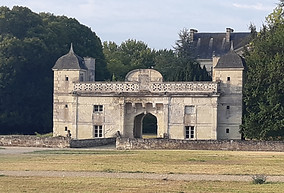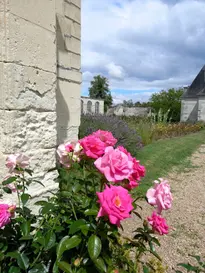
A castle between the Middle Ages and the Renaissance
The lordship of Clairvaux was initially established at Haut-Clairvaux , a castle site which developed mainly in the 11th century, and of which only a keep and a castle chapel remain today.
It was following a dispute between the two descendants of Haut-Clairvaux that the construction of the current Château de Clairvaux began in Bas-Clairvaux.
It was Renaud Chabot , then his son Robert , who began the construction of the castle, in the years 1500-1510 , notably erecting the West wing, with its tower, its chapel and its vaulted cellars, witnesses to the beginning of the Renaissance in Poitou.
The action of René de Villequier and the d'Aumont



In 1580, the estate experienced a major turning point when it was acquired by René de Villequier , close to the King of France and Poland, Henry III, and guardian of the royal treasure. He transformed the castle into a vast monumental complex, with a rich entrance gatehouse inspired by the architectural models of Jacques Androuet du Cerceau , and in particular the Château d'Anet.
Upon his death in 1590, his daughter Charlotte-Catherine inherited the estate, and her husband, Baron Jacques d'Aumont, continued the development. Their son Cézar, in a declaration made in 1633, described the complex in a structure similar to that visible today: a monumental bailey with symmetrical pavilions, a tennis court, a wine press, and a large stable.

The Clairvaux estate was acquired in 1704 by Étienne Chérade de Montbron. His grandson, Adrien-Alexandre, undertook a vast transformation campaign between 1760 and 1770: he extended the main building with a classical-style building , which remained unfinished. Despite the Revolution, the château escaped destruction, although the heraldic symbols were hammered out.
The park is carefully designed, incorporating many exotic species . A candelabra-shaped yew tree, two stands of tall lime trees, a majestic plane tree to the south, and a cork oak against the moat wall still stand.He obtained a prize from the Royal Agriculture society in Poitiers for his cork-oaks plantations

Sold during the Second Empire, the castle was gradually dismembered and became partly a farm. It was not until 1929 that it was listed as a National Heritage Monument before being purchased and restored from 1964 and in 1983 and 1987 by its current owners. It has been open to visitors since 1990.









